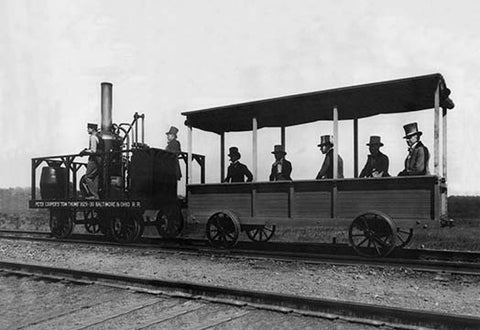
Testing the New Invention - The Train
In 1830 the first American-built steam locomotive was designed, the Tom Thumb, by Peter Cooper to show the Baltimore and Ohio Railroad that steam engines should be used to power the new railways as opposed to horse-drawn cars. The first locomotive was four wheeled with a vertical boiler and a vertically mounted cylinder to drive the wheels. While on its return from its first test run, the Tom Thumb was challenged to a race by a horse drawn carriage. The Tom Thumb quickly and easily took the lead, however, the belt slipped off the blower and the Tom Thumb ended up losing the race. No one could deny that the Tom Thumb had clearly proven that it was by far the quickest and most efficient means of travel. The development of the steam locomotive allowed for the expansion of the railway over rougher terrain and longer expanses. The steam engine allowed people to travel from one side of the country to the other and for quicker and easier transportation of goods nationwide. The test ran in Baltimore, Maryland.
